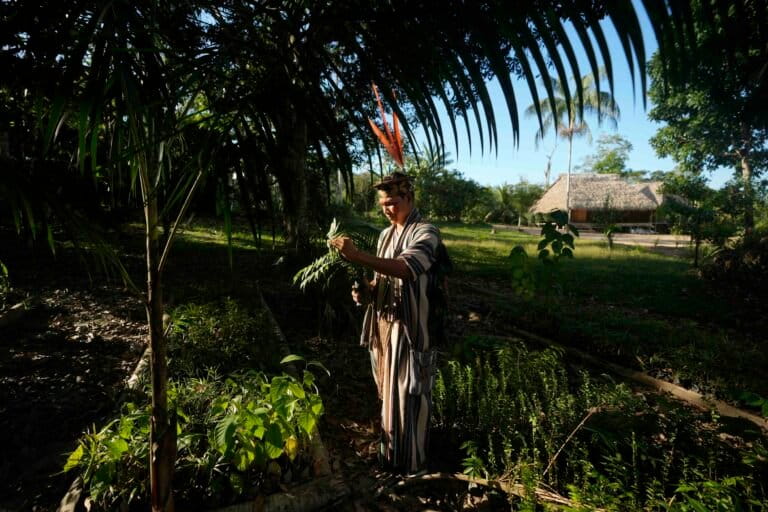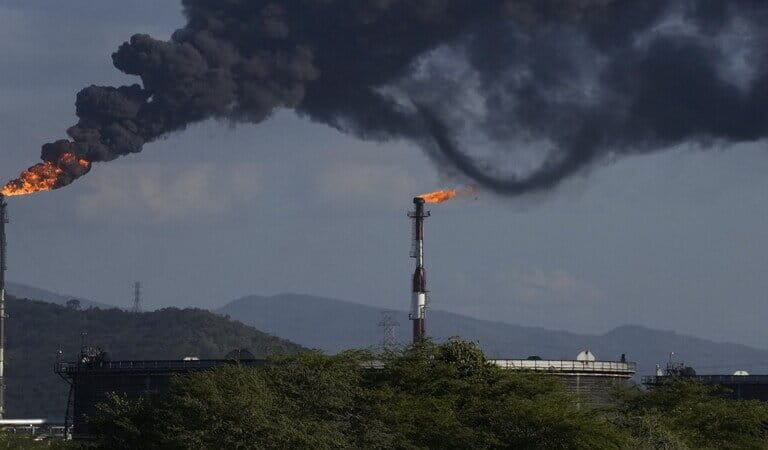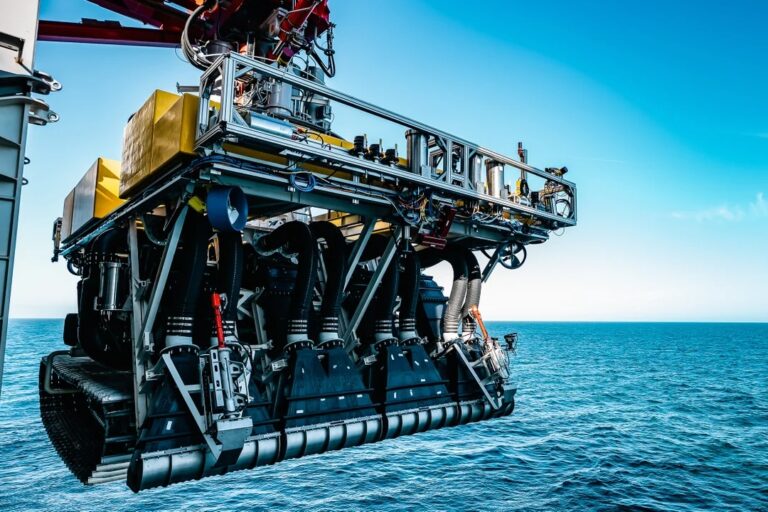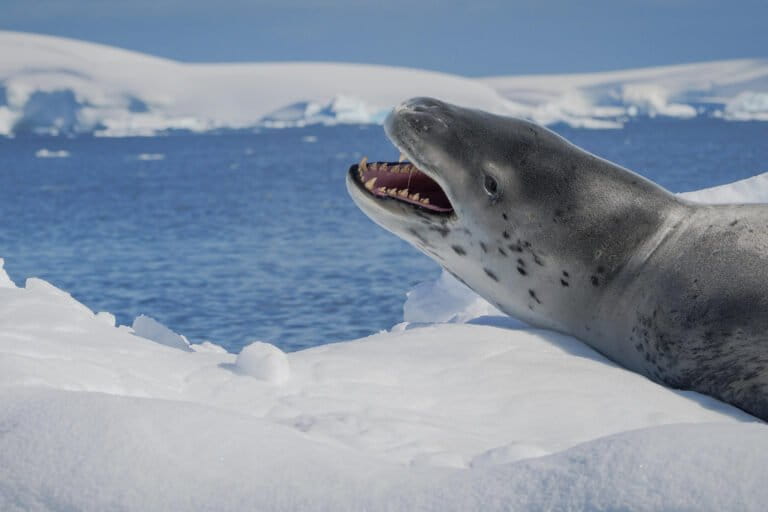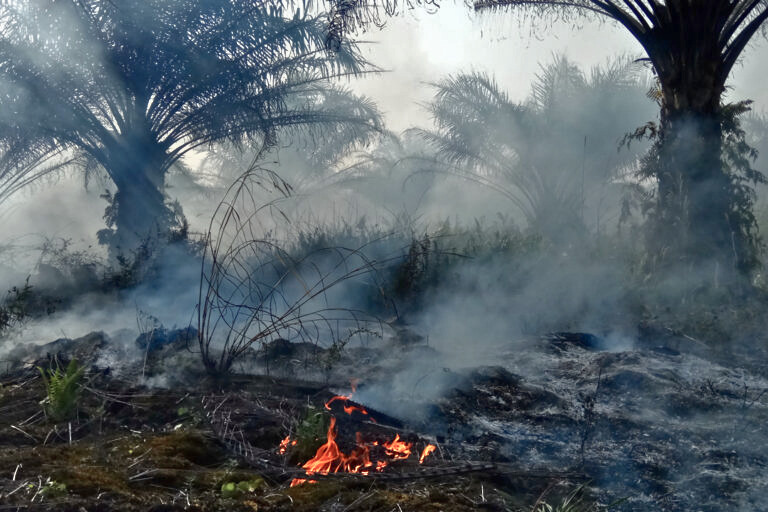- Semá:th Xhotsa, or Sumas Lake, in Canada was the center of First Nations’ food system and culture, before European colonists drained it in 1924 to create farmland.
- Almost 100 years later, catastrophic flooding threatens to refill the lake and displace the farmers.
- First Nations people and university researchers have proposed restoring the lake ecosystem to adapt to climate change-driven flooding, and as a method of reparation, but the local government is pushing back.
The Fraser Valley is home to some of Canada’s most important agricultural land, but 100 years ago this region was a huge glacial lake and the center of the Semá:th people’s food system.
“The lake provided everything that the Nations needed,” says Troy Ganzeveld, councilor for the Semá:th Nation.
The area now faces an uncertain future, as current residents of the lakebed struggle to keep it dry, and the lake fights to return. In response, the Semá:th people and researchers are calling for the lake’s restoration to address the harms of the past while adapting to future climate change.
Semá:th Xhotsa, also known as Sumas Lake, was located in what is today the Lower Fraser Valley of British Columbia province. First Nations’ food systems relied directly on the lake. There were ducks, geese, salmon, sturgeon, clams, wild hazelnuts and strawberries. Residents traveled on the lake by canoe to hunt deer and elk on islands. For the Semá:th people, the lake was the primary source of food and central to their culture as a gathering place.
European settlers began to occupy British Columbia in the 1850s, taking land to establish European-style agriculture. By the 1920s, the colonists had developed a plan to drain Semá:th Xhotsa to create farmland, and by 1924 the lake was drained into a human-made canal and the nearby Fraser River.
Over the past century, the region has changed dramatically: less than 30% of the native vegetation remains, and more than 85% of floodplain habitat and 64% of streams in the area have been lost.
Almost a century after the lake was drained, in November 2021, the landscape abruptly transformed again: the lake started to return. Atmospheric rivers inundated parts of British Columbia, causing catastrophic flooding. In the Fraser Valley, pump stations and dikes that had managed flooding on the lakebed for decades were overwhelmed.
“It rained like I’d never seen before,” says Matt Dykshoorn, a dairy farmer on a multigenerational farm in the region. “It was beyond comprehension for a lot of people … they just didn’t know what they were up against.”

As the lakebed refilled, rising water levels forced more than 3,000 people in the region to evacuate. The flooding destroyed homes, farms and businesses, and resulted in more than 670,000 livestock deaths and hundreds of millions of dollars in damages, making it the costliest natural disaster in British Columbia’s history.
Researchers estimate that climate change made the extreme precipitation about 60% more likely. Wetter conditions plus rising temperatures melting snow in the surrounding mountains ultimately overwhelmed flood defenses.
“The flood protection system that our forefathers built in the 1920s and that we’ve tweaked ever since is just completely inadequate for this magnitude of a flood,” Mike Currie, water resources engineer at consulting firm Kerr Wood Leidal (KWL), tells Mongabay.
But the Semá:th people were prepared for the return of the lake. Elders had shared knowledge of the lake’s original water levels, so the community were prepared and built homes higher than the former lake, ensuring if the lake returned their homes would be safe.
Fighting the flow of water and cascade of climate events won’t be enough, sources say. Finally, in June 2024, the Semá:th people and researchers at the University of British Columbia (UBC) collaborated to publish a paper exploring the possibility of allowing the lake to return in order to adapt to flooding.


An alternative plan
The plan could be achieved by buying properties on the lakebed and having residents relocate, which the study estimates would cost around C$1 billion ($724 million), less than half of the estimated C$2.4 billion ($1.74 billion) cost of repairing dikes and building a new pump station to keep the lakebed dry.
Ganzeveld says the Semá:th people don’t want farmers relocated unless they choose it willingly. “We definitely know, and our ancestors know, what that’s like to be removed from the lands that you’re connected to,” he says.
The paper argues that restoring Semá:th Xhotsa can help the region adapt to future flooding, giving floodwaters somewhere to go. Climate models suggest extreme flooding could continue to happen, and that regions below sea level — like the Semá:th Xhotsa lakebed — are at risk.
In light of this growing risk, local governments of the Fraser Valley are discussing flooding mitigation and adaptation strategies. Representatives of the cities of Abbotsford and Chilliwack, the First Nations of Semá:th, Matsqui and Leq’á:mel, and the province of British Columbia signed an agreement to make Sumas Prairie more resilient to flooding, pledging to benefit people, farms and infrastructure. A similar agreement covering the Canada-U.S. border, where flood risks are interconnected, includes the same stakeholders plus the Native American tribes and county and state officials in Washington state.
But the proposal to restore Semá:th Xhotsa has faced criticism from the city of Abbotsford, which concludes, in consultation with KWL, that the UBC paper underestimates the cost to restore the lake and that expenses would go beyond buying the land on the lakebed.
Currie from KWL says cost analyses would need to consider moving the Trans-Canada Highway, which crosses the floodplain, as well as a major regional power line, fiber-optic cables, and oil and gas pipelines.
Dykshoorn and other local farmers say they’re concerned about the proposal’s effect on agriculture. “I’m OK with having that conversation, but we have to use real numbers,” Dykshoorn says. “The Sumas Prairie lake bottom is second to none in Canada for its agricultural production [so relocating] would have an enormous impact on the Fraser Valley, British Columbia’s food security, and many people’s livelihoods.”
Abbotsford Mayor Ross Siemens said in a recent statement that, “Reflooding Sumas Lake would mean losing premium agriculture land and significantly impact our provincial food supply. As Mayor, I want Sumas Prairie residents and farmers to rest assured that returning the lake is something we simply will not consider.”
Opposition from the city government isn’t a surprise, says Murray Ned, executive director of the Lower Fraser Fisheries Alliance and a co-author of the UBC paper.
“I think they’re trying to protect their interests as best as they can,” he says, adding that Abbotsford has been considering flood mitigation options without consulting the Semá:th Nation for its endorsement before making those options public.


Tara Martin, a UBC professor and co-author of the paper, says this study was an initial step to get the conversation on the table, but that they too would like to better understand the cost of losing agricultural productivity.
But restoring Semá:th Xhotsa would not only facilitate climate resilience, according to the paper, it could help lakebed property owners who face uncertainty. The flooding has made it more difficult to get insurance, and some lakebed properties have even become uninsurable.
Restoring the lake could also create salmon habitat that could be highly profitable for the region, according to Martin.
Beyond economic considerations, restoring the lake could begin to address the harms initially caused by its loss, which the Semá:th people say they feel to this day. The Semá:th Nation was never compensated for the theft of the lake. In 2013, it filed a land claim for the former lake, seeking some compensation, but the claim has since been shelved.
“We don’t want to see people displaced the way our people were displaced when the lake was drained,” Ned says. “But you have to think about the living things that were displaced … Are there opportunities to have some form, a portion of [the lake], come back?”
Flood mitigation and adaptation discussions are ongoing among municipal governments, but for now, the federal government has been absent and has not provided financial support. The federal government should be part of this process, says Currie, especially considering its participation in these historical land and infrastructure decisions.
Members of the Semá:th Nation say they hope that instead of focusing on newer and larger dikes and pump stations, there will be an opportunity for people to live more harmoniously with water.
“Our membership is in support of trying to live with water instead of fighting against it,” Ganzeveld says. “Over the last over 100 years, that’s been happening — trying to fight Mother Nature.”
“We have a one-in-a-100-years’ chance to reconcile what happened in 1924,” Ned adds. “So this is probably our first and only chance, where we’ll have the ability to influence the way forward.”
Banner image: Fraser Valley as seen from Sumas Mountain. Image by The Cosmonaut via Wikimedia Commons (CC BY-SA 2.5 CA).
Culture and conservation thrive as Great Lakes tribes bring back native wild rice
Related Mongabay podcast episode: What Indigenous knowledge can teach the world about saving biodiversity. Listen here:
Citation:
Finn, R. J., Ned – Kwilosintun, M., Ballantyne, L., Hamilton, I., Kwo, J., Seymour-Hourie, R., … Martin, T. G. (2024). Reclaiming the Xhotsa: Climate adaptation and ecosystem restoration via the return of Sumas Lake. Frontiers in Conservation Science, 5. doi:10.3389/fcosc.2024.1380083
FEEDBACK: Use this form to send a message to the author of this post. If you want to post a public comment, you can do that at the bottom of the page.






